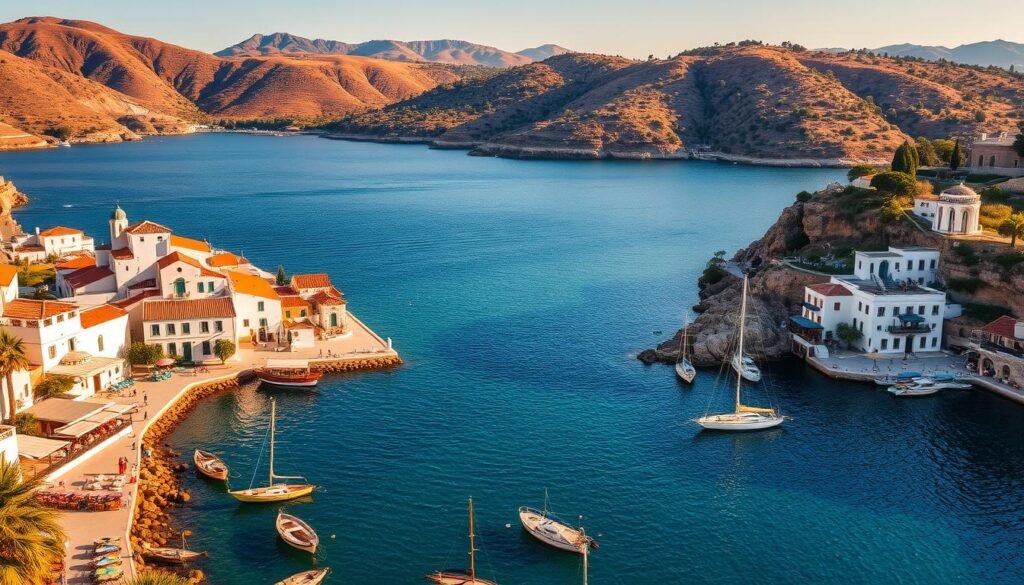Greece has over 200 inhabited islands, and that number alone can make planning a trip feel impossible.
I spent months island hopping since 2021 and visited 27 places. Those months taught me ferry rhythms, Meltemi season quirks, and budget tactics that actually work.
This guide curates friendly picks for a first time traveler who wants beautiful beaches, history, food, and simple logistics without the sticker shock or crushing crowds.
I explain how I narrowed choices so you won’t be overwhelmed, which island makes a perfect starter hub, and which ones are best saved for when you have more time or a bigger budget.
Think of this as the practical map I wished I had—with timing tips, ferry platforms I use, and quick add-ons that deliver big value.
For a deeper solo travel focus, see my related post on best greek islands to visit for more planning ideas.
Key Takeaways
- I visited 27 islands and learned practical ferry and budget tactics.
- This guide favors authenticity and value over overcrowded hype.
- You’ll get starter islands, hub suggestions, and smart add-ons.
- Timing and logistics tips help you dodge the worst crowds.
- Advice is geared for a realistic, do-able trip for first timers.
Why Greece Keeps Pulling Me Back: What This Listicle Covers
I’ve come back to these greek islands again and again over several years, and this guide is the short, usable version of what I learned. Think of it as a practical guide that helps you pick where to fly, which destinations match your style, and when to go for fewer crowds and better prices.
I focus on the planning parts that matter first: time of year, budget limits, and simple logistics. Late spring and early fall give sweeter weather and lower costs than peak summer, which I also explain for those who only have that window.
This list breaks destinations into clear styles — history-rich towns, laid-back beach hubs, foodie spots, and places built for adventure. I also highlight people-focused experiences: family-run stays, local cafes, and small businesses that made my trips feel real.
Use this guide as a planning companion. It previews each destination’s rhythm so you can match a trip to your energy and budget, and it flags the trade-offs between iconic scenery and easy movement.
The Best Greek Islands to Visit for the First Time
For a first trip, I pick places that balance scenery, access, and real local life. This shortlist highlights eight accessible options that give strong value without the worst crowds. I recommend starting with one larger hub, then adding a contrasting island for variety.
Skip the sticker shock: beauty, value, and fewer crowds
My picks include Athens (gateway), Crete (does-it-all hub), Naxos and Paros (Cycladic looks without the high prices), Rhodes and Kos (history + beaches), Hydra (car-free escape near Athens), and Corfu (Venetian flavor with easy flights).
How I chose: beaches, culture, ruins, food, and easy logistics
- I weighed easy arrivals, ferry links, and flight options as top criteria.
- I compared beaches, local food, and historic sites against likely crowds and costs.
- I favored islands where water and towns shine at different price points and sizes.
| Island | Why it Works | Vibe | Pairing Option |
|---|---|---|---|
| Athens | Gateway hub, flights and ferries | City + history | Hydra (day trip) |
| Crete | Beaches, ruins, food variety | Large, varied | Naxos (contrast) |
| Naxos & Paros | Classic Cycladic look, good value | Laid-back to lively | Paros or Naxos |
| Rhodes & Kos | History and varied beaches | Touristy but roomy | Corfu (different vibe) |
How I’d pair them: For a one-week trip, pick a hub like Crete and add Naxos or Paros. For 10 days, combine Athens + Hydra + one Cycladic island for contrast.
Use the rest of this guide to zero in on timing, ferry tips, and food picks that match your ideal island life.
Athens Is Your Gateway—And Worth a Few Days
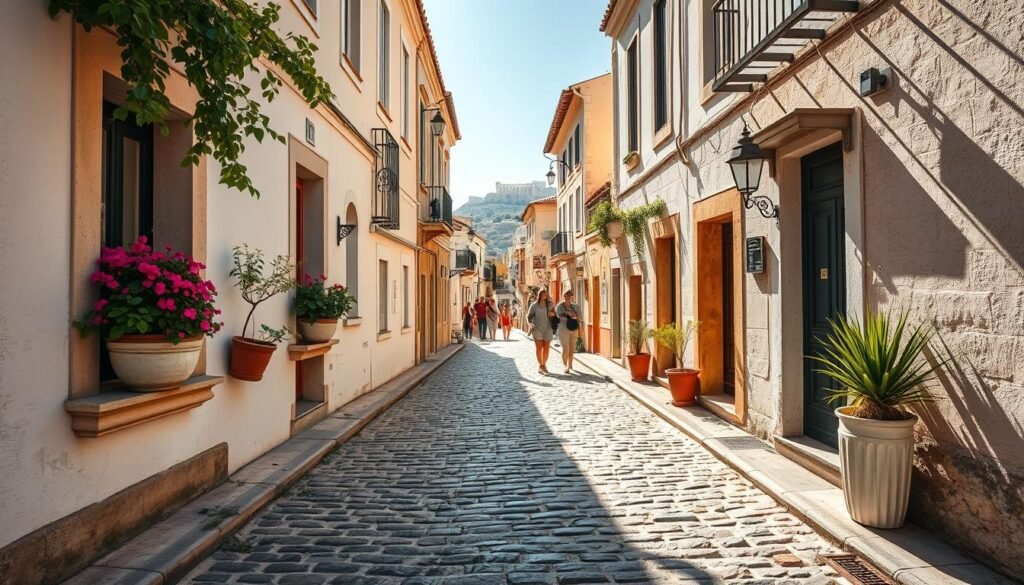
I land in Athens first because it makes travel plans simple and flexible. The city has the widest flights choice and three main ferry ports—Piraeus, Rafina, and Laurio—that set you up for island connections with minimal fuss.
Acropolis, Agora, and cobblestone streets with real soul
Start early at the Acropolis and the Acropolis Museum to beat crowds and see the ancient ruins with calm light. Afterward I walk the Ancient Agora and let Plaka’s cobblestone streets lead me to a small cafe.
Flights, ferries, and why starting here saves time and money
Athens anchors most arrivals, so you can often get cheaper or more direct flights. From the city I pick a ferry or a short flight depending on which islands I’m heading for next.
- I like a simple day plan: Acropolis + museum in the morning, Agora midday, wander Plaka at sunset.
- Monastiraki and Psiri are my go-to neighborhoods for coffee with views and rooftop nights.
- There are nearby beaches if you want a quick shore fix before your island leg.
Quick tip: Give Athens 2–3 days. You’ll save time, see key sites, and still be ready for the island pace.
Crete: Greece in One Island-Sized Package
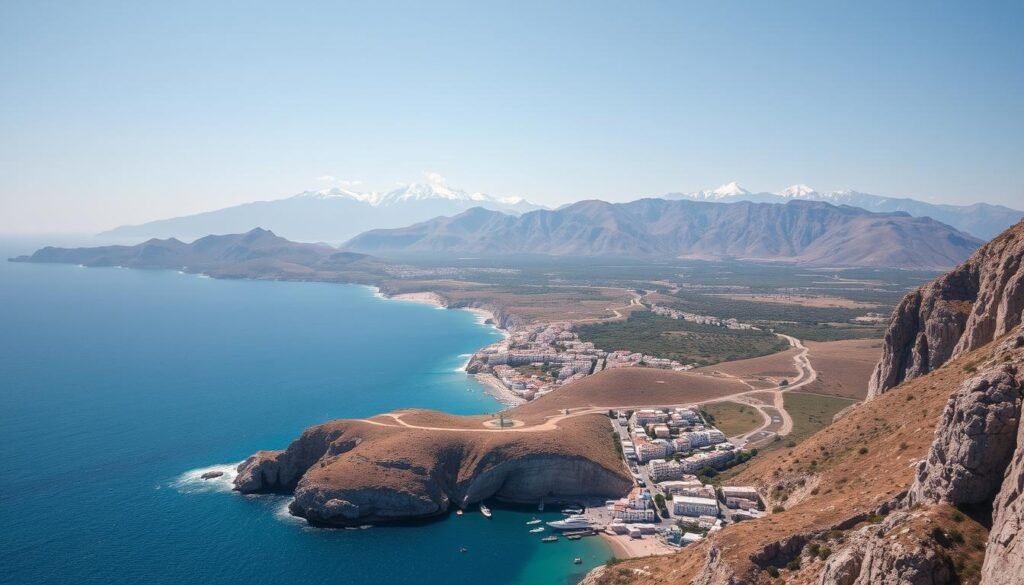
Crete wraps a huge range of landscapes and history into one island you can actually explore in a week. It’s large in size, so I cluster sights by area and save driving time.
Ancient ruins and sites: Knossos and beyond
Knossos is a must-see for ancient ruins and Minoan history. Other archaeological sites feel quieter and give real context without crowds.
Beaches and mountains: Elafonissi, Balos, and gorge hikes
The island’s beaches range from showpiece sand at Elafonissi and Balos to small coves with clear waters. Mountain trails and gorge hikes add contrast and cool views.
Old towns and food: Chania, Rethymno, and Cretan flavors
Evenings in Chania or Rethymno mean narrow lanes, sea views, and outstanding local food. I often plan dinners around village tavernas and market stops.
Smart connection hub: ferries and flights that simplify your trip
Heraklion and Chania double as practical hubs for ferries and flights. I sometimes do a Santorini sampler day from Crete to capture postcard views without staying there.
- Split 3–5 days: Knossos + Heraklion day, Chania base, one beach day, one hike.
- Save money by staying slightly inland and renting a car only for key days.
- Go early or late in the season for quieter waters and easier travel.
Naxos & Paros: Cycladic Charm Without the Chaos
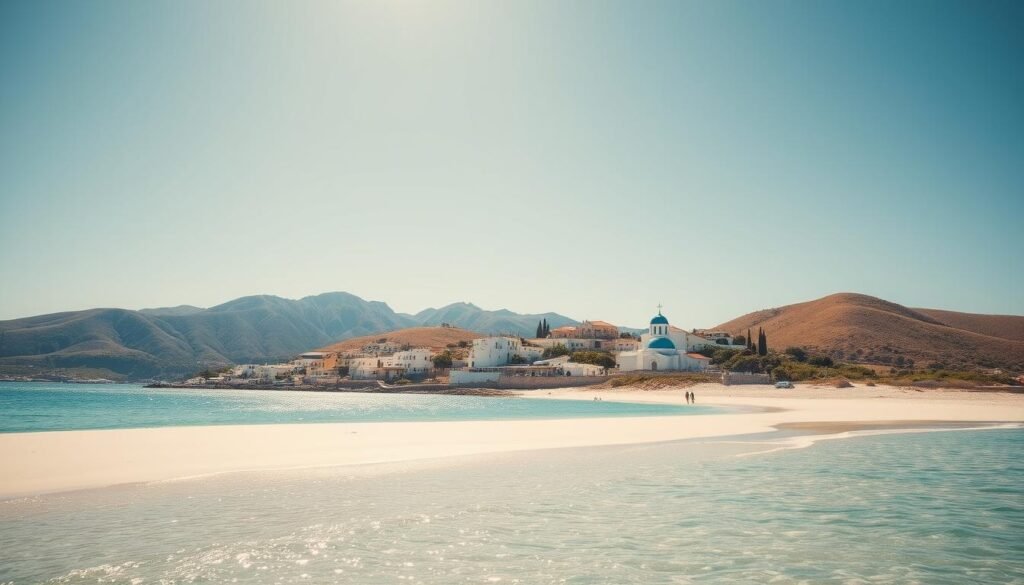
These two islands pair timeless Cycladic views with calmer rhythms and easy ferry hops. I use them when I want classic whitewashed lanes and wide beaches without nonstop crowds.
Naxos highlights
Portara sunsets are unforgettable; I watch the light shift behind the Temple of Apollo and then wander Chora’s cobblestone streets. Plaka Beach stretches for miles, giving room even on busy days. A short drive upland brings quiet mountain villages where life slows down.
Paros vibes
Naousa buzzes at night with waterfront cafes and breezy beach bars. Paros makes island hops simple, with frequent ferries to nearby spots. It’s an easy base for day trips and lively evenings.
- I split 4–5 days by mixing beach time with cobblestone strolls and easy dinners by the water.
- Save money by staying just outside main hubs and booking ferries early as popularity rises.
- Look for calm waters and photo-friendly views at sunrise or late afternoon.
| Feature | Naxos | Paros | Why Choose |
|---|---|---|---|
| Vibe | Laid-back, traditional | Lively, social | Choose calm or nightlife |
| Beaches | Wide sandy stretches (Plaka) | Trendy beach bars | Sand vs. scene |
| Connections | Airport + ferries | Frequent ferries | Easy island hops |
| Local life | Mountain villages | Harbor cafes | Village peace vs. harbor buzz |
If you only have room for one, pick Naxos for quieter beaches and traditional villages, or Paros if you want lively nights and fast ferry links. Both give a true taste of the greek island soul without the push of peak crowds.
Rhodes & Kos: Dodecanese History with Beachy Bonuses
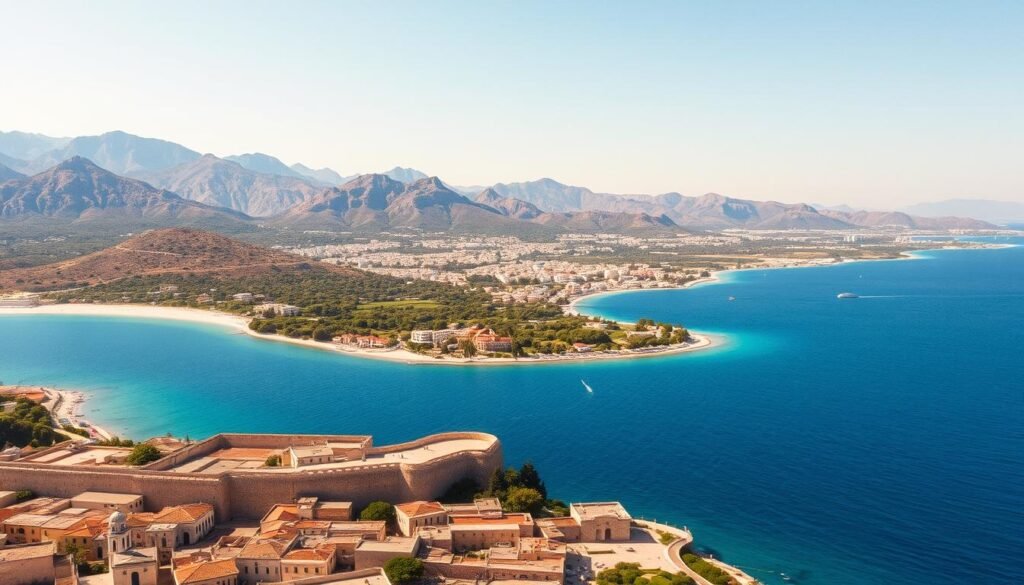
Rhodes and Kos pair layered history with easy beach time and surprisingly affordable days. Both islands offer rich sites and coastal towns that fit a relaxed first time itinerary without constant crowds.
Rhodes Old Town magic
Rhodes’ UNESCO-listed Medieval Old Town blends knights’ quarters, Ottoman mosques, and Italian-flavored streets. I map a full day from the medieval gates to the Palace of the Grand Master, wandering scenic cobbles and quiet courtyards.
For a beach break, I head to Lindos for sweeping views or Prasonisi if I want wind and waves. Short flights from Athens make Rhodes an easy first stop on an island route.
Kos on a budget
Kos pairs low-cost charm with ancient ruins in town and the leafy Tree of Hippocrates. I rent a bike or scooter for a few dollars and find quiet villages and coastal towns off the main strip.
From Kos, cheap boat day trips can take me to nearby islands or even over to Turkey for a single-day detour.
- I suggest pacing: sites early, beaches midafternoon, and evening strolls through old streets.
- Fly into Rhodes, then ferry or hop a short flight to Kos if you’re tight on time.
- Look for short climbs or coastal viewpoints for the best sunset views.
Why combine them? Together, Rhodes and Kos give wide-angle history, calm beaches, and simple connections — a balanced taste of Dodecanese life for first timers.
Hydra: Car‑Free Island Life an Hour from Athens
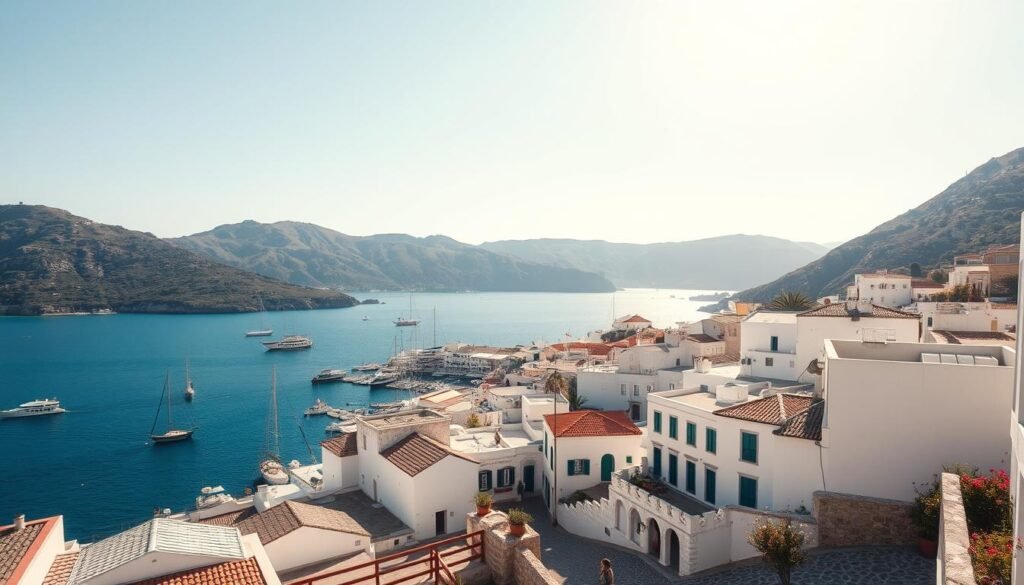
Hydra feels like a slow film: harbor light, walking lanes, and a rhythm that nudges me to linger. The island sits just over an hour by ferry from Athens, so a short trip can feel surprisingly complete.
Donkeys, harbor views, and artful alleys
There are no cars here—only donkeys, water taxis, and narrow cobbled streets that lead to galleries and quiet cafes. I start with coffee on the quay, then wander alleys filled with local art.
“The lack of engines changes the pace, and that calm becomes the island’s main attraction.”
- I plan a perfect day: ferry in, slow walk, swim at a small beach reached by boat, and dinner along the harbor.
- Stay near the waterfront for everything within easy reach; a short path inland finds peaceful corners and small villages.
- Use water taxis for coves and beaches, then return for sunset views over the port.
Combine Hydra with a couple of Athens days for a short, low‑stress escape that leaves a strong impression. For a thoughtful read about island life here, see Rick Steves’ piece.
Corfu: Venetian Flair, Olive Groves, and Sandy Coves
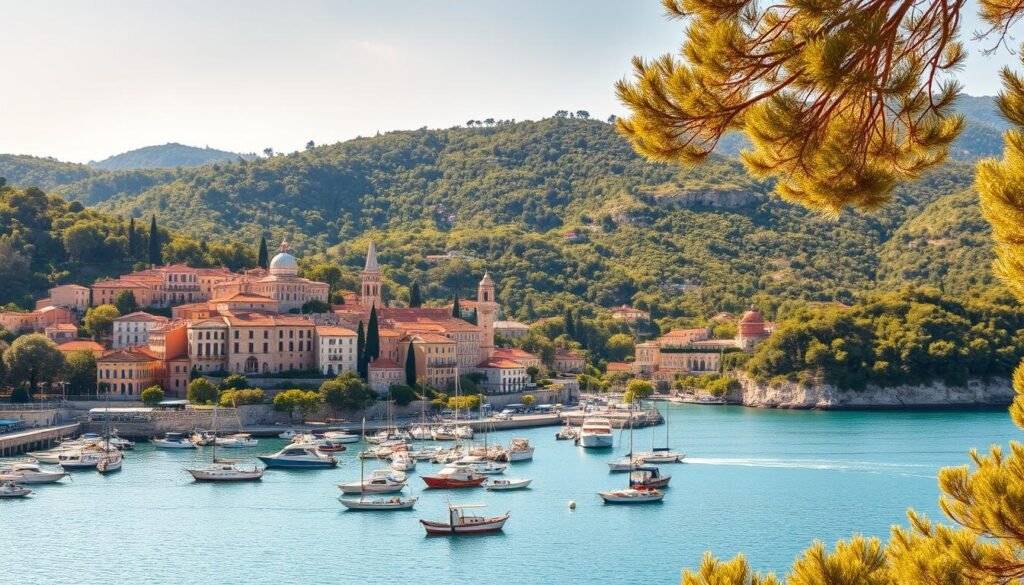
Corfu blends stately Venetian mansions, forested hills, and broad sandy coves in a way that caught me off guard.
There’s no regular ferry from Athens, so I flew—it’s faster and often cheaper. From the airport I rented a car and found freedom: coastal towns, hidden coves, and quiet drives through olive groves.
I stayed in hilltop Giannades above the Ropa Valley. The village felt peaceful and more affordable than Corfu Town. My mornings began with sweeping views and ended at sandy beaches with calm waters for easy swims.
“Driving a small loop along the coast and then inland through olive groves made the island feel endless and friendly.”
I mapped a relaxed loop: Paleokastritsa for clifftop views, Kassiopi for a breezy afternoon, and long beach time on the west coast. For summer travel, book lodging early and pick villages outside the main port to cut crowds and prices.
- Fly from Athens or mainland Europe and rent a car for full access.
- Give Corfu 3–4 days to mix old‑town wandering, beach downtime, and village food stops.
- Look for low‑key tavernas where local food is cheaper and more memorable.
Sifnos: A Slow-Down Island for Food Lovers

I found Sifnos by following the scent of warm bread and simmering stews down narrow lanes. The village centers feel handmade: whitewashed homes, fragrant bakeries, and slow evenings shared over plates.
This island is culinary at heart. It’s the birthplace of Nikolaos Tselementes and famous for chickpea stew, mastelo, and revithokeftedes. I planned a food-focused day tasting those dishes, then walked off lunch on short coastal trails.
Vathi and Faros are intimate beaches where the waters stay calm and clear. Ferries link Sifnos from Athens and nearby islands like Naxos and Milos, so it’s easy to downshift after a louder stop.
Why I love it: genuine hospitality, quiet towns, and a relaxed vibe that favors conversation over clubs. For a first time traveler who wants simple pleasures, this island became one favorite of mine.
- 2–3 day plan: market morning, food tasting midday, Vathi or Faros in the afternoon, and a short village hike at sunset.
- Lodging tip: stay near the main square for food access and calm night waters.
- Pairing idea: follow Sifnos with a livelier island if you want one upbeat night after slow days.
Island Hopping Logistics: Ferries, Flights, and Timing That Work
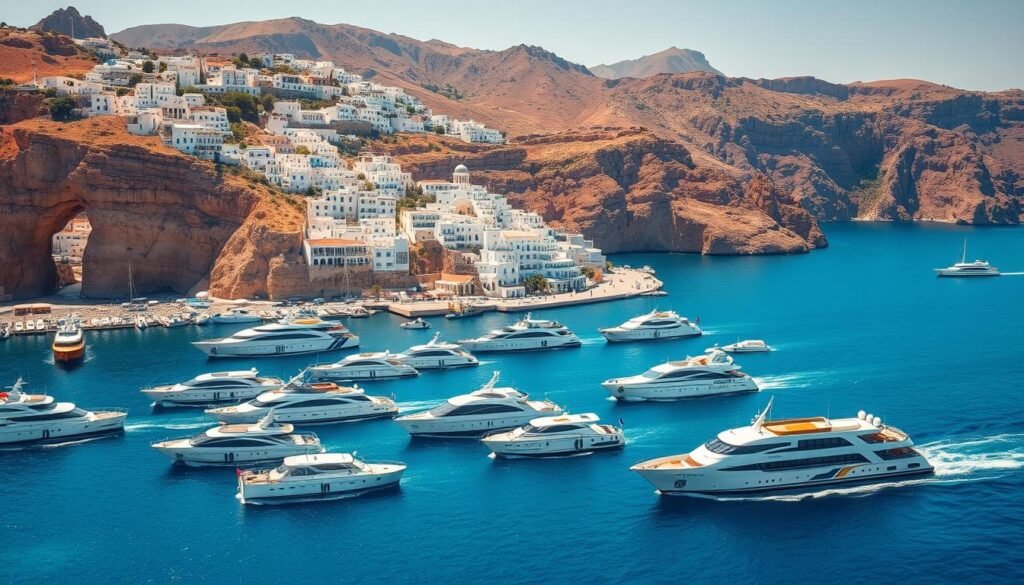
I treat logistics as part of the fun. Good timing, the right routes, and a few booking habits keep travel simple and more pleasant.
When to go
Late spring and early fall give the best balance: warm water in late September, fewer crowds, and lower prices than peak summer. Avoid the week around August 15—prices spike and ports fill fast.
Ferry basics and booking
Athens has three main ports: Piraeus, Rafina, and Laurio. I book through Ferryhopper or more.com and skip scanners that show inflated fares. Tickets can start near €15. On Blue Star I reserve an Airplane Type Seat for comfort (€10 extra).
Seats, timing, and choices
Don’t book so far ahead that change fees bite. In peak months I lock in at least a week out; off-season I often buy day-of. For longer hops, flights are an easy option. For short crossings the ferry or a boat day keeps plans flexible.
Budget plays and a flexible plan
Pick less touristy towns, travel shoulder season, and rent a car only for select days. Use short boat trips to expand your adventure without changing your base. I keep one easy backup plan in case weather or schedules shift during the trip.
Choose Your Vibe: Quick Picks by Travel Style
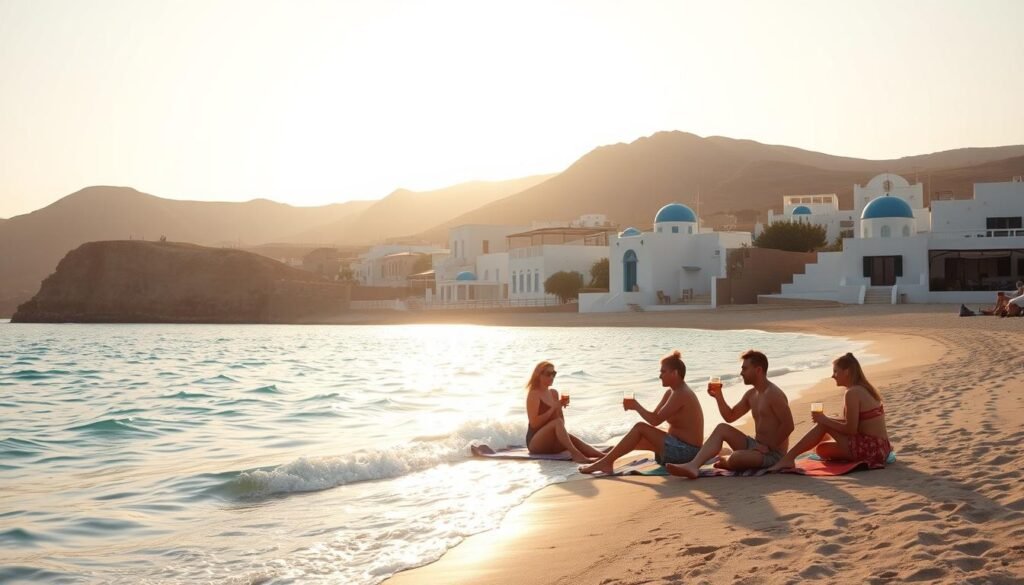
Start by choosing the kind of days you want: lazy shorelines or museum afternoons. Pick a clear vibe and the route becomes much easier.
For beaches and variety
Crete, Naxos, Corfu — these offer broad beaches, varied views, and easy flight or ferry links. I use Crete as a hub and add Naxos or Paros for Cycladic contrast.
For history and architecture
Rhodes, Kos, plus an Athens add-on suit museum-minded travelers. Plan mornings at ruins and afternoons along coastal streets to balance the day.
For quiet, local life
Sifnos and Hydra deliver slow evenings, village tavernas, and fewer crowds. They pair well with a busier neighbor if you want contrast.
Classic Cyclades aesthetics on a budget
Naxos, Paros give the white-and-blue look without premium prices. For a 7–10 day trip, pair one larger island with one smaller spot for a smooth route.
- I sort picks by vibe so you can shortlist what you’re looking for.
- Late spring and early fall trim crowds and save money on lodging.
- Use the logistics guide earlier in this guide to lock routes and ferry times.
Conclusion
Travel here is flexible: choose a gateway, pick a hub, add one contrasting island, and leave room for an unplanned adventure.
I know there’s no single right answer — your ideal mix depends on what you’re truly looking for in each day and which parts of a trip matter most.
Use the quick‑picks in this guide and my blog to finalize a route that fits your budget and time. Anchor with a hub like Crete or Athens, then add a calmer or livelier island for contrast.
Timing matters: late September often gives warm water, fewer crowds, and better rates. Book ferries or a flight, but keep one free day for spontaneity.
I’ll say it plainly: Greece gets under your skin fast. Pick a date, make that first booking, and let the rest fall into place. Clear seas, sun‑warmed beaches, and thanks for traveling thoughtfully.


